From an emirate to space travel (and back again)
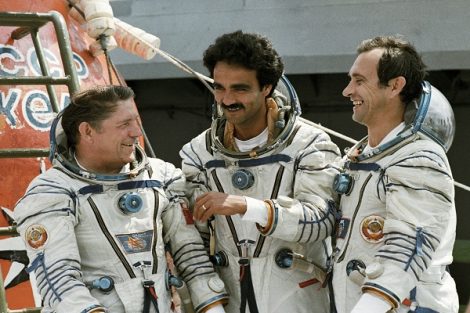
I did not intend to write about Afghanistan, or the land of the Afghans, or as they call the tomb of empires, but, I felt obliged from another perspective to write a word or two about this country of disobedient peoples living in it, unlike from liberal apologists shedding crocodile tears over the plight of women there, or those on the far right who hysterically announce a refugee invasion of the country. A country where so many peoples live, and where so many languages are spoken (11 or 12 are spoken only in Kabul) because of the many ethnic groups and subgroups that make Afghanistan an open museum of different cultures. Most of them are ethnic Pashtuns, followed by Tajiks, Khazars, Uzbeks and several other smaller ethnic communities and groups of people.
In the late 1970s, before Soviet troops entered the country, as many as 46 different languages were recorded, divided into seven language groups, or four language families. It is dominated by Iranian languages Pashto and Dari (Persian) as official languages in the country. According to 2001 estimates, the most numerous are Pashtuns with about 40%, followed by Tajiks between 25-30%, then Khazars with 10-15%, then Uzbeks with just under 10%, followed by smaller ethnic and linguistic groups such as Turkmen. , The Belluji, the Durans, the Pasha, the Nuristans and many others. Islam is the main religion in the country, which according to the US CIA is professed by as many as 99.7% of the population, the majority of whom are Sunni (between 85-90%) while the rest are Shiites and Ismailis.
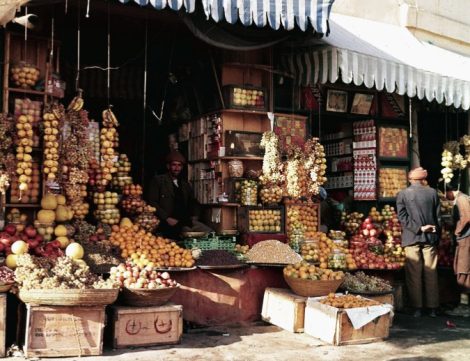
Unfortunately, illiteracy among the population is very high, especially after the Taliban entered Kabul in 1996, when it was estimated that 55% of men, and as many as 85% of women, were illiterate, making the Afghan nation one of the most illiterate globally. The main economic branch is agriculture with a share of between 80-90% of Afghanistan’s GDP, despite the fact that only 12% of the soil is arable. Tribal organized Pashtuns (Patani and Afghani) are a state-building people, predominantly inhabiting the south, east and west of the country, mostly stationed around the city of Kandahar, but also Kabul and several smaller towns, and much less so in the north of the country. Their language is Pashto-Afghan, which, like Persian, uses the Arabic alphabet and has been the official state language since 1936.
The Afghans are mostly cattle breeders and farmers (nomads) organized tribally, while the richest of them who are the descendants of the rich trade caravans still have trade, transportation of goods and traffic in their hands. The Tajiks, on the other hand, are more urban than the Pashtuns and are mostly stationed in urban areas such as Kabul and Herat, as well as in the northeast of the country, which borders the high mountain ranges. They are mainly engaged in handicrafts and retail trade, but they can often be seen as officials. They speak the Dari language, which was codified under that name only in 1964 in order to distinguish it from the official Persian language spoken in neighboring Iran. The Dari language is spoken in lingua franca in Afghanistan despite the fact that it is spoken by only 30% of the population, but because it is understood by as much as 80% of the total population in the country, which is about 25 million inhabitants.
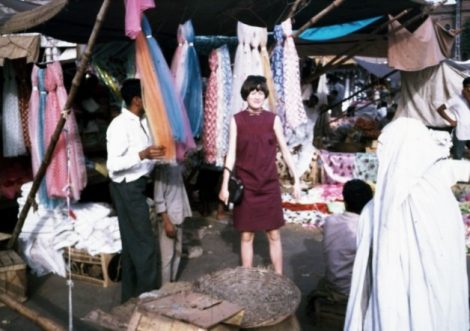
The Tajiks, unlike the Pashtuns, are not tribally organized, and the ethnonym Tajik refers to them, but also to all those who speak Persian. The Khazars, who are physically similar to the Mongols, are considered to be the descendants of the Genghis Khan soldiers who were organized in formations of a thousand (Khazar in Persian means a thousand) people. The Khazars, unlike the dominant Pashtuns who are Sunni, are Shiites, the Twelve Imams and the Ismailis, who do not marry each other. In addition to large cities such as Kabul, Kandahar and Herat, they live in the north of the country. They speak Khazaraji – Western Persian with Turkish-Mongolian borrowings.
They are considered to be very valuable and modest people who are not properly appreciated and respected by the Pashtuns and Tajiks in the cities, so they mainly do the most difficult things, such as servants, wage earners, carriers and water carriers. The Turkmen and Uzbeks, who belong to the Turko-Mongol tribes, inhabit most of the northern parts of the country, on the border with Turkmenistan and Uzbekistan. Tribes migrated from Central Asia as early as the Middle Ages when they inhabited the fertile plains of the far north of Afghanistan. Once notorious robbers and slave traders, pacified from the beginning of the last century, Uzbeks today live mainly as peasants and herdsmen, sheep breeders, widely known for producing the prized caracal fur.
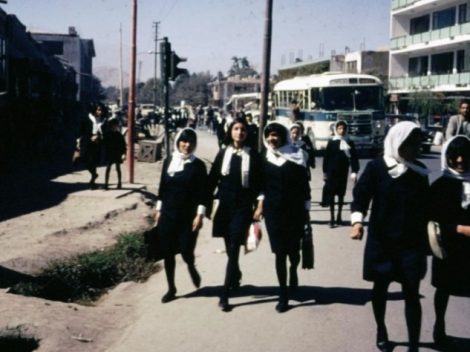
The Turkmen, on the other hand, are widely known for their hand-made Afghan rugs, much more famous for which are the Baloch, who live in the south and southwest of the country, in the plains overlooking the Indian Ocean, where they live as nomads (Kuchi), immigrated from the shores of the Caspian Sea around the 10th century. A separate group is the Mountain Tajiks or Ismailis, an Islamic Shiite group, followers of the Aga-Khan, who have their own customs and calendar, known for their way of irrigating their fields on the high slopes of the Pamirs, at an altitude of over 3,000 meters. Nuristanis, on the other hand, occupy a special place in the Afghan mix of peoples and cultures, living in the mountains north of the Kabul-Peshawar road.
It is known that before the end of the 19th century they were called kafirs (infidels) because of their adherence to their pagan gods, before they were forcibly converted to Islam. Many researchers point to their origins in the armies of Alexander the Great, largely due to the fact that many of them still today, after two millennia, have blue eyes and blond hair. What is most symptomatic in their culture is that they used to use chairs to sit on, until before they converted to Islam when they started sitting exclusively on the ground. Remnants of their old customs can be seen today in the neighboring Kalashi people. They speak as many as four languages belonging to the group of Indo-European languages - Ashkuni, Vaigali, Kaiti and Parini. A small number of Sikhs and Hindus in the cities use the New Indian languages - Punjabi, Sindhi and Urdu.
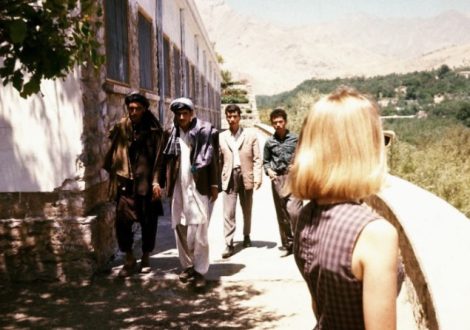
Despite the multitude of languages, until 1978 Pashto and Dari were the only official languages, but then the socialist government of Babrak Karmal, following the example of the Soviet government, granted the right to other linguistic minorities with the right to their own language, allowing them to be stamped. literature and textbooks in the mother tongue. A curiosity is that the Persian language remains a staple of anti-Soviet resistance. Given that the word Afghan was used as an ethnonym for Pashtuns and Afghani as a synonym for Pashto, it would later be suggested that all different ethnic groups in Afghanistan be included in the name Afghans after Pakistan, in order to “minimize” Pashtun rule. which in principle becomes counterproductive and at the expense of all those who are not pathetic.
This is why there is a lot of criticism from the scientific community that does not come from the ranks of the majority Pashtuns, alluding to the fact that language, in addition to ethnicity and religion, is the most important feature of self-identity in Afghanistan. This will be especially pronounced with the coming to power of the Taliban, when a pluralistic Afghan society is massively exposed to Pashtunization and Islamization through strong egalitarianism on that basis. A whole century has passed since the advent of the Afghan national awakening (if it can be called that), beginning in 1823 when Dost Mohammed Khan Barakzai proclaimed himself Emir, whose reign would not last long due to British colonial aspirations. who in 1837/38 will lead an army starting the First Anglo-Afghan War, as one of the first major military conflicts during the Great Game.
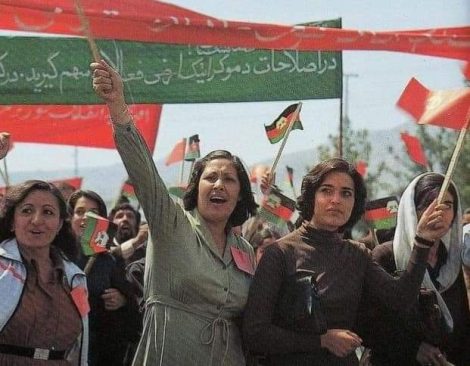
Synonymous with the strategic rivalry between the British and Russian empires in an attempt to dominate Central Asia. A period of strategic competition for supremacy on the Asian continent between the two most powerful empires at the time, from the Russo-Persian Treaty of 1813 to the Anglo-Russian Convention of 31 August 1907 in St. Petersburg, which established Anglo-Russian relations. laid on a solid footing after the two empires agreed on the division of spheres of interest and influence in Afghanistan, Iran and Tibet. Thus, after the defeat of the British-Indians in 1842, the British were forced to establish diplomatic relations with the Afghans who emerged victorious from this war, withdrawing from the country.
But they returned in the late 1970s during the Second Anglo-Afghan War to a two-year military operation to help Emir Abdur Rahman-khan fight the defeated Ayub-khan. Finally, after long wars, truces, and treaties, including one from 1879, in 1893, under the auspices of the British diplomat Sir Henry Mortimer Durand, who, through the politics of divide et impera, persuaded Emir Abdur Rahman to sign a controversial treaty. where the territory of the ethnic Pashtuns and Baluchi is divided by the 2640 km long Durand Line, which will actually be the border between Afghanistan and Pakistan. The policy of the British imperial power that would later lead to the establishment of the new state of Pakistan.
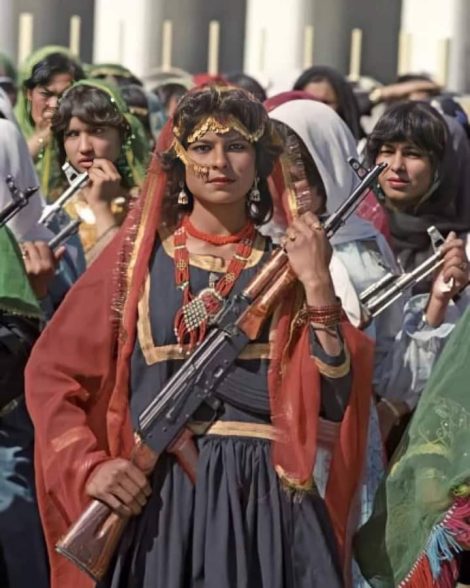
The British thus enabled Emir Abdur Rahman to form a centralized Afghan government with a fierce absolutist regime, which would be succeeded by his son Habibullah Khan in 1901, signing a 1905 agreement with the British to confirm his father’s obligations. Despite several reforms carried out by the new ruler, Afghanistan remains a deeply isolated country. In the years to come, there will be growing resistance to absolutism by opponents of the regime who are creating a movement called the Young Afghans.
In World War I, Afghanistan will take a neutral course despite attempts by Germany and Austria-Hungary to enter Afghanistan on their side of the war. In 1919, Emir Habibullah Khan was assassinated and replaced by his son Amanul, led by the ideas of the young Afghans. The British refusal to recognize Afghanistan’s independence would lead to the Third Anglo-Afghan War in 1919, followed by a Preliminary Agreement by the British recognizing Afghanistan backed by Soviet Russia, which in May 1919 also established diplomatic relations with Afghanistan, and in 1921 a Treaty of Friendship that culminated in the provision of assistance by the Soviet government. A year in which the international recognition of Afghanistan’s independence will finally be confirmed by official London through a special agreement.
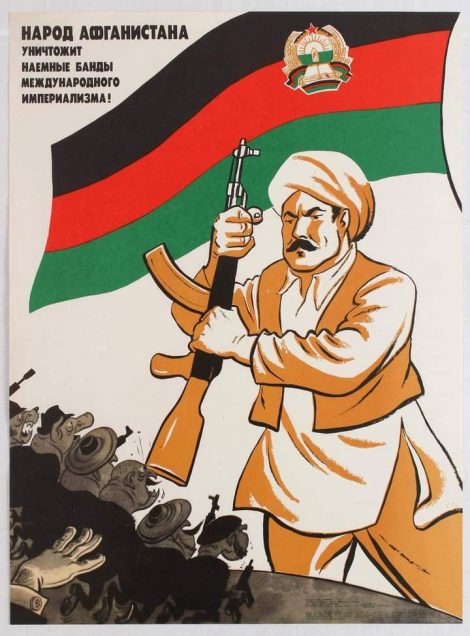
On March 31, 1926, Afghanistan will sign a Treaty of Neutrality and Non-Aggression with the Soviet Union. Pahman Pact. However, in the years to come, Afghanistan will face many ups and downs, as well as many changes in the ruling dynasties, both due to abdications and assassinations and overthrows. Thus King Amanullah Khan, who would declare Afghanistan a completely free and sovereign state, would be forced to abdicate in January 1929, after the fall of Kabul to the rebel forces led by Habibullah Kalakani. To the abdication of Amanullah Khan’s throne are worth mentioning some of the many revolutionary changes in Afghan society at the time, including the reforms of Mahmoud Tarzi, the main proponent of modernizing the nation through its education.
Fierce advocate for the education of women in the country through the introduction of Article 68 of the 1928 Constitution of Afghanistan, which makes primary education compulsory in the country. Full three decades before the introduction of compulsory primary education in SFR Yugoslavia as part of the General Law on Education adopted in 1958 as part of the implementation of the new education policy in post-war Yugoslavia, as a result of the decisions of the Third Plenum of the Central Committee of the CPY held in December 1949, which introduced compulsory primary education and upbringing on the territory of the whole of Yugoslavia, as well as the only eight-grade primary school on the territory of the whole of Yugoslavia.
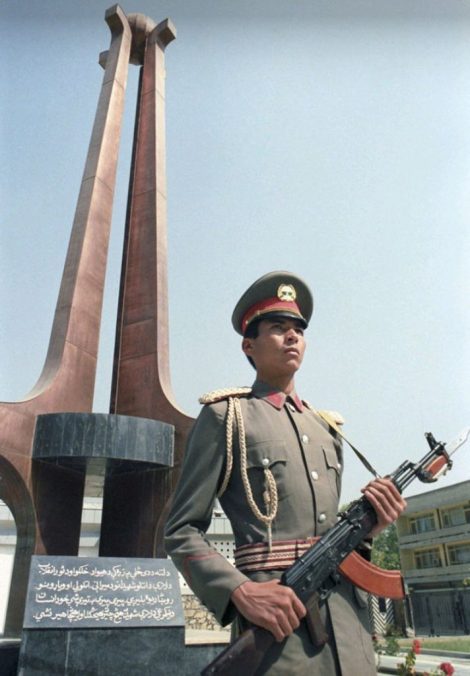
With this educational reform, Afghanistan is at the very top of the world at that time. Earlier, in 1923, slavery was abolished in the country, which dealt a severe blow to the feudal landowners. One of the most important reforms is the one that abolishes the wearing of the traditional burqa by women and the mass opening of the doors of educational institutions for them, which will largely alienate tribal and religious leaders and force the armed opposition. In most of the years that follow, Afghanistan boasts some positive changes, but also changes that go downhill.
What is positive about the neutrality in the Second World War, as well as the infrastructural interventions that will start after its completion through the help that will come from the Soviet Union. What can be noticed as a negative side among the Afghans at that time are the frequent changes of government, followed by frequent changes in the state and constitutional order of the country. Finally, after many years, in 1965, the People’s Democratic Party of Afghanistan (NDPA) was formed, led by Nur Mohammad Taraki, which advocated the establishment of socialism in the country, but only two years later the party split. Two political factions, Parcham (flag) and Hulk (people), are formed. The first is moderately liberal, the second is extremely radical. Disagreements over the country’s future between the two factions within the NDP will deepen over time.
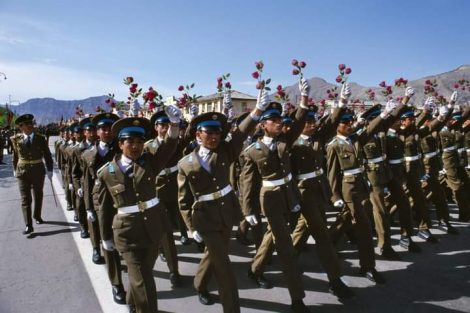
On July 17, 1973, Mohammad Daud-Khan, a member of the Royal Family and Prime Minister of Afghanistan from 1953 to 1963, with the help of one of the NDP factions organized the overthrow of the monarchy and the establishment of the Afghan Republic. However, after taking power and assuming the office of President of the Republic, Mohamed Daoud will begin by removing from power all members of the NDPA, which will cause great revolt among them. The glass of discontent will be poured at the moment when the prominent journalist and editor-in-chief of the NDPA party bulletin, but also one of the political ideologues of the Parcham faction, Mir Akbar Hiber, will be killed.
An act that will provoke mass protests that will precede the Saur Revolution (April Revolution) of April 27, 1978. In the meantime, at the end of 1977, there will be a formal unification of the Parcham and Hulk factions. Frightened by socialist unity, Mohammed Daud orders the arrest of socialist leaders in mass protests, but insurgent units aided by pro-socialist militias begin a decisive battle against Mohammed Daud’s forces, defeating them in the early days. The crowning achievement of the Socialists will be the liquidation of members of the royal family, including Mohammed Daud himself.
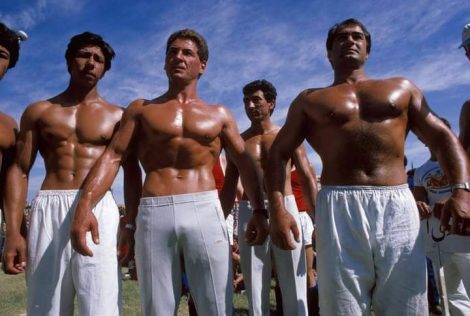
After the successful Saur revolution, which is essentially anti-clerical and anti-feudal in the country and socialism will be officially established as a political-economic system of government, ignoring the specifics of Afghan society, where in response to the new socialist order will be formed an opposition composed of political entities against which Soviet troops would later be deployed to assist at the request of the socialist government in Kabul. Two days after the outbreak of the revolution, on April 28, 1978, the Democratic Republic of Afghanistan, the country’s new official name, will be proclaimed.
NDP leader Nur Mohamed Taraki will be officially named the new Prime Minister, Babrak Karmal his deputy, and Hafizullah Amin the foreign minister. Many military historians and military-political commentators have described the revolution as a classic coup with the help of several military officers, following the example of Lav Gorelov, a military adviser to the Afghan Armed Forces from 1975 to 1979, but there are others who are far behind. more rigid in the claims, which estimate that not only was a military coup carried out but that the act itself and what follows would bring the country’s development back in a few decades. The loudest are those who claim that Moscow is behind this coup, with the help of which another satellite socialist government has been installed, following the example of those in Eastern Europe.
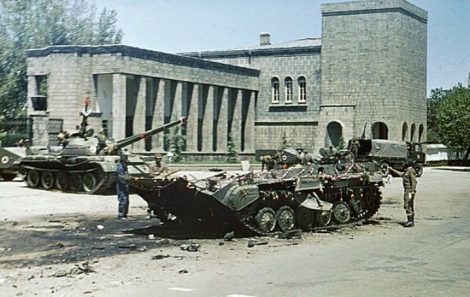
Which is essentially not true, given the fact that the Soviets were not consulted at all about this lightning-fast action of the socialist leaders aided by the army. This is evidenced by several written documents, including that of General Lakhovski in the book Tragedy and Courage in Afghanistan in which he says, among other things:
“For the Soviet officials in Kabul, as well as for our special services, the military coup of April 27, 1978 was like a bolt from the blue because they simply ‘slept it.’ “NDP leaders hid their plans to overthrow Daud from the Soviet side, and they consulted even less on this issue because they were convinced that Moscow was looking negatively at their intentions.”
This is evidenced by Petar Vasilevich Goncharov, a military expert from the Military Institute of Foreign Languages and Linguistics, who in the ’70s and’ 80s spent a decade and a half on various tasks in Afghanistan, primarily in the field of military-technical Cooperation between the USSR and DR Afghanistan, and from 1986 to 1989 he led a group of translators at the General Staff of the Ministry of Defense of DR Afghanistan, about the possible involvement of Moscow in the Saur revolution will say in an interview:
“The Soviet Union did not have the task of introducing socialism in Afghanistan. “It was an initiative of the Afghans themselves.”
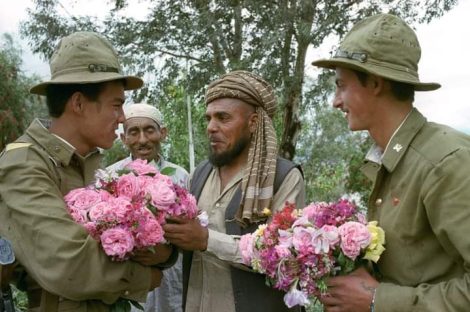
In another article in the January issue of a socialist newspaper entitled The Problems of Peace and Socialism from 1979, a prominent NDPA member described the pre-revolutionary situation in the country as follows:
“The masses were ready for a revolt. The standard of living had plummeted. More than one million people have emigrated from Afghanistan to Iran. The legitimacy of the government was severely shaken, in the eyes of law enforcement; orders were not obeyed. It was very important that we worked with some people for 13-14 years and we were a serious people’s movement. “Before the revolution, our revolutionary party was a great force with 50,000 members and supporters, something that really frightened the regime.”
After the Saur revolution in the ranks of the ruling revolutionary NDPA there will again be factional unrest that will lead to a new division which this time will result in the assassination of Prime Minister Nur Mohamed Taraki, the dissolution of his cabinet and the arrest of nearly 18 thousand and their trial. pose a potential threat to the new government, this time led by the radical wing of the NDP-Hulk faction, led by Secretary-General Hafizullah Amin, who will remain in power until Soviet troops arrive on December 25, 1979, when he is assassinated. His place was taken by the leader of the moderate Parcham faction and former ambassador of Afghanistan to Czechoslovakia, Babrak Karmal.
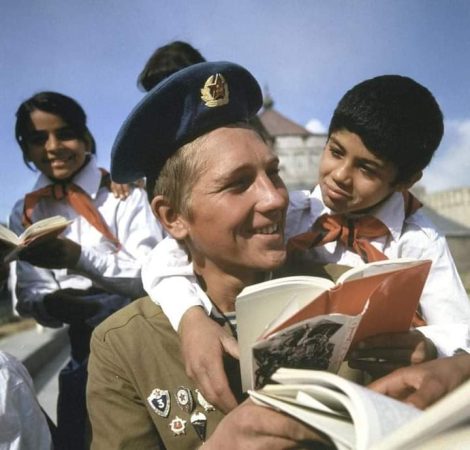
The Soviet invasion of Afghanistan, which even after 40 years liberal capitalist apologists like to call an invasion, and which is in fact a military intervention, is in fact no less and no more, but a response to the help requested by the government of DR Afghanistan to deal with the influx of extreme Islamist religious fundamentalism and anti-government activities after the overthrow of the monarchy in 1973, and especially after the 1978 revolution. A period that was a thorn in the side of the clerical and feudal establishment, characterized as a period of rule by the ungodly, as the NDP members were called.
The changes, which will primarily lead to even greater development of the country, and which are primarily the result of the efforts of the socialist government under the leadership of the NDPA, will be completely rejected by the clerical religious authorities in the country and abroad. especially in neighboring Pakistan (there are three million Afghan refugees) and Iran (there are one million Afghan refugees), but also in most countries of the Islamic world from the Maghreb to Indonesia. Such reforms that are directly contrary to Islam and the traditional values of the Afghans will be recognized as an ideological weapon, a reactionary element dangerous to the Islamic order, tradition and culture. Therefore, in the name of Islam, these clerical authorities will call for the formation of an ideological opposition to this communist evil as they call it, aided, of course, by Western imperialists and their authoritarian monarchical allies in the Middle East, where thousands of mujahedeen soldiers were trained.
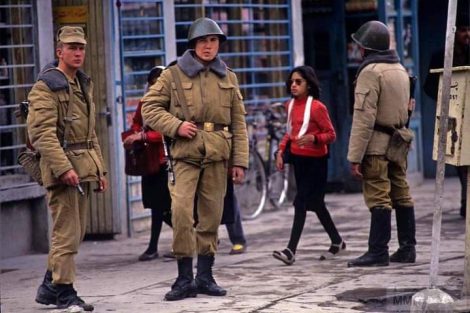
Yet we connoisseurs of historical dialectical materialism are not at all surprised by the interpretation of historical currents from the position of the bourgeois-liberal spectrum of interpretation of history and politics. The apologists of capitalism that you will never hear in your liberal NGOs criticizing imperialism these days, in addition to their heartbreaking articles and TV stories about the tears (and desperate attempts to board a NATO plane) of the occupiers’ collaborators, as well as Women’s rights and the return of democracy to Afghanistan following the Taliban’s return to power do not forget to say a word or two about the repressive communist regime backed by the Soviet Union and the Reds’ invasion of the north.
Therefore, in this political-historical analysis, I will try to present as briefly as possible the greatest civilizational achievements of the working Afghan people, starting from the late 1950s until the withdrawal of Soviet troops from Afghanistan on February 14, 1989. In these three decades, Afghanistan has experienced such a quantum leap of civilization as no other country or culture in the modern history of the world. Of course, such achievements would not have been possible without the open and wholehearted assistance of the Soviet Union, which built exactly 142 economic and infrastructure facilities in Afghanistan, most of which were built before Soviet troops entered the country.
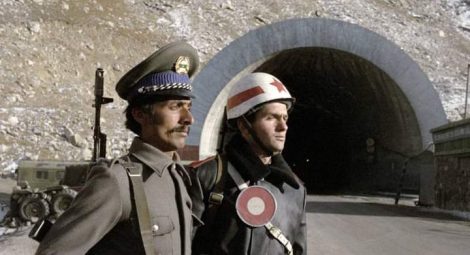
One of the first architectural buildings is of course the Salang Tunnel and the avalanche protection gallery along the Salang Road. The main contractor of the works is the Moscow Metro, and it was officially opened on September 2, 1964, only five years after the start of the works. Among those present at the opening ceremony were the President of the Council of Ministers of the USSR, Alexei Kosygin, as well as King Zahir Shah of Afghanistan. Also worth mentioning is the Naglu hydropower plant with a capacity of 100 MW, 40 km from Kabul, whose hydropower plants were officially launched in early 1967, seven years after construction began. A plant built according to a project of the Hydroproject Institute. During the war years it provided security for the Soviet army, and after 1989 the mujahedeen detachment under the command of Gulbedin Hakmatyar.
After the Taliban came to power, the facility and the technical staff fell into their hands, after which it immediately started operating at a reduced capacity, as only two of the four hydraulic units remain in operation. Another important mega project of that period is one of the most strategic facilities, more in terms of education, than infrastructure and space. It is the Polytechnic University of Kabul, invented by Soviet specialists, the amount of which at that time exceeded a staggering six million rubles. An institution that will educate generations and generations of Afghan students, and before the entry of the Taliban in Kabul, more than four thousand students studied and about two hundred lecturers worked. A university where Russian was the main foreign language (as many as 70% of the students studied it) using it to the maximum in their teaching.
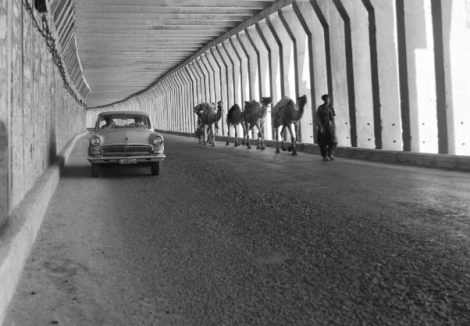
In addition to these capital facilities, in the next two or three decades many more ports, bridges, roads will be built (out of 2800 km of road network more than half or about 1500 km are built by the Soviets), agricultural and food factories, factories, schools , hospitals, housing estates, many of which are collective homes, homes from entire neighborhoods such as those in the capital Kabul, which Afghans proudly call micro-districts, alluding to the vast apartment neighborhoods in one of the most beautiful parts of the city. Many generations of young Afghans will receive quality education, profiled by the highest quality highly educated staff who will later go on to further training in some of the world famous institutes.
Such is the case with Abdul Ahad Mohmand, the first and only Afghan cosmonaut to be in space in 1988 as part of the Soyuz (Union) crew on a nine-day mission to the Mir (Peace) space station. The young Mohmand as a freshman at Kabul Polytechnic University in 1978 will be spotted and carefully selected by the authorities, and then sent to the USSR for military training in Krasnodar and the Kiev Aviation Military School. Upon his return to his homeland, Mohmand joined the Afghan Air Force, which the Soviet-mediated country had formed in 1927, when it received three warplanes from the Soviet Union.
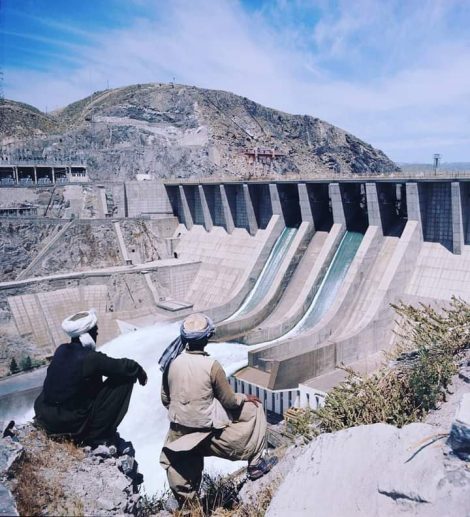
These fighter jets are accompanied by mechanic and instructor I. Mr. Chichin from the Volgod military district. From Termez to Kabul the planes are equipped with a caravan of camels. A group of Afghan pilots has previously been trained in Soviet educational institutions and military pilot training centers, and Soviet military experts assist in organizing the combat training of Afghan flight technical personnel and in the operation and operation of aircraft equipment. Something that at that time was still unthinkable for many European countries. But let me return to the story of the national hero of Afghanistan, Abdul Mohmand. Three years later he became one of eight selected from a group of 400 volunteers to take part in Intercosmos, a Soviet space program that sends people into space from non-Soviet countries, including Bulgaria, Mongolia, Syria, Vietnam and several others. privilege.
Thus, after extensive preparations, the former cadet of the prestigious Yuri Gagarin Aviation Academy in Moscow, Abdul Ahad Mohmand, in the early morning of August 29, 1988 from the Baikonur Cosmodrome in Kazakhstan, together with the Ukrainian Vladimir Polyavov and Rusyov Vakhavov will be. There he will take with him two copies of the Holy Qur’an, earning him the honor of being the first Muslim in space (although some say he is the Saudi Sultan bin Salman al-Saud, who traveled with the American crew three years earlier) to be second only to him. The Syrian Mohamed Faris, and the third is the Azerbaijani Musa Manarov.
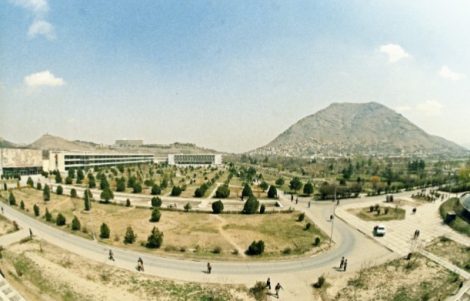
While in orbit, Mohammad will have the honor of talking to then-Afghan President Mohammad Najibullah via satellite, as well as sending his message to the nation. In the message he will send to his fellow citizens, Mohmand will briefly tell them:
“Take your neighbor by the hand and lay down your weapon. “Let’s solve our problems through joint dialogue.”
His country is in complete chaos at the time, as the Afghan resistance movement, made up of mujahedeen and foreign volunteers backed by the United States (CIA), Pakistan and Saudi Arabia, is gaining strength against Soviet troops. The last battle in the Cold War between the two opposing blocs seems to be taking place in this disobedient country, “only” 400 kilometers below the feet of the famous Mohmand who floats high up and prays for peace and reason in a country whose dust and ashes will become a tomb for empires.
The famous Mohmand who after the coming of the Taliban to power will have to leave his homeland forever and go away from home with his family, escaping from the madness that will prevail in the land of torment. He will seek his happiness in Germany, where he still lives with his family. Abdul Mohmand will become the embodiment of the complete evolution, but also the devolution of Afghan society, showing the world at the same time the progress and achievements of this brave and disobedient people, but also the steep decline in the values of a system that will be an unattainable ideal many future generations of young Afghans.
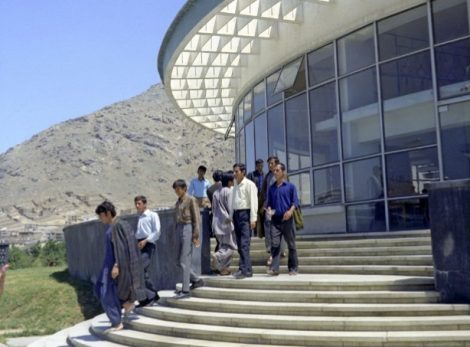
When it comes to the modernization of Afghanistan, back in 1955, a large Soviet delegation arrived there to present a package of measures for the development of the Afghan economy worth a then staggering $ 100 million. Many technological institutes are starting to be built, factories for bread and bakery products, factories for production of asphalt and concrete that will serve in the construction of the road infrastructure in the country, which as I mentioned before, only until 1978 from the total built 2800 km road network , more than half or about 1500 km will be built by the Soviets.
In the late 1960s, Soviet technical and economic assistance to Afghanistan reached a staggering 70% of total international aid. These are primarily the largest economic infrastructure projects in the country, following the example of the aforementioned Salang Tunnel, the Naglu Hydropower Plant, the irrigation complex (employing as many as 6,000 people) in Jalalabad, the Sherhan River Port on the Amu Daramod River, Jangalak in Kabul, the already mentioned Kabul Polytechnic University, the Nitrogen Fertilizer Institute in the second largest city of Mazar-e-Sharif, with a capacity of 105 thousand tons per year. Then there are the two large gas fields in the north of the country with a capacity of production and distribution of four billion cubic meters of gas per year, as well as a gas network, mines for the exploitation of several types of ore minerals.
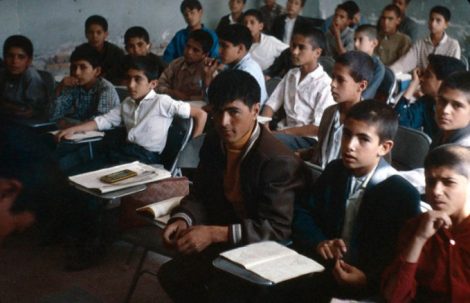
Also worth mentioning is the plant for the construction of collective housing with a capacity of an impressive 35 thousand square meters of living space per year. There are also many river rail and road bridges, including one of the historic photographs showing the withdrawal of Soviet troops (soldiers mounted on BTR military transporters) on February 14, 1989. The 816-meter-long Amu Darya River Friendship Bridge on the border with Uzbekistan, which connects the ports of Termez in Uzbekistan and Hairatan in Afghanistan, is 75 kilometers from the second largest city of Mazar-e-Sharif. The main road artery from north to south and vice versa, through which most of the goods pass by land, which is half of the total transport in the country.
The Friendship Bridge, or Puli-Dusti as it is still called, will be crossed by the 40th Soviet Army, beginning on May 15, 1978, until February 14, 1989, when the last Soviet troops left Afghanistan. In addition to the technical and technological assistance of the USSR to Afghanistan, the investments in personnel and training of personnel in all areas, from agriculture, through construction, medicine and education, to the military and space program are also noteworthy. Imagine, as many as 60,000 Afghan citizens will be trained in various professions, for which the Kabul Polytechnic Institute – KPI is the most deserving, from which as many as 2400 highly educated personnel could be educated at once, for whose education hundreds of Soviet experts, lecturers and instructors were in charge.
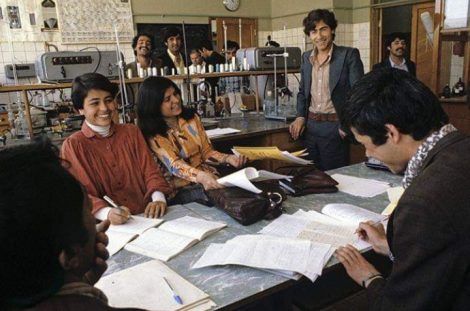
After the revolution of April 27, 1978 in Afghanistan until March 1979, 75 agreements were signed in the field of economic aid, which includes, among others, 4,500 Soviet advisers in all fields. On January 1, 1988 alone, the Afghan army registered 1,007 Soviet military specialists, including 694 military advisers, but the numbers ranged up to 2,000, according to former Najibullah’s former adviser, Army General M. А. Gareev. The Kremlin’s decision to withdraw from Afghanistan opens the door to the formation of an Islamic emirate and the overthrow of the ruling NDP’s secular system of government.
And as on December 12, 1979 at the official request of the government in Kabul, and on the proposal of the commission of the Politburo of the Central Committee of the CPSU for Afghanistan (composed of JV Andropov, AA Gromiko, DF Ustinov and BN Ponomariev) to the Secretary General of the Central Committee of the CPSU, L. И. Brezhnev will be submitted a decision to provide military assistance to Afghanistan with the entry of a contingent army on its territory, and according to a decree of the USSR Ministry of Defense on December 25, 1979 at exactly 15:00 Moscow time and the decision to launch a military operation with landing in Kabul and Bagram, also at the 43rd Session of the UN General Assembly in December 1988, M. С. In addition to the Geneva Accords of 15 May 1988, Gorbachev would propose a ceasefire on 1 January 1989 between all the warring parties, although Gorbachev announced his withdrawal from Afghanistan in February 1986 at the 27th session of the CPSU.
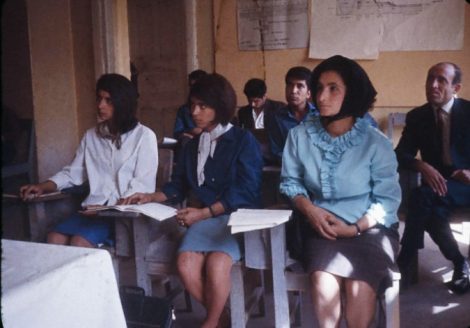
A decision to end the decade-long military conflict in Afghanistan that will take 15,000 lives in the ranks of the Soviet Army and KGB security structures and organs, and as many as 54,000 wounded soldiers, while on the other hand over one and a half million civilian casualties and millions of displaced people in neighboring countries, in the chaos that lasted exactly nine years, one month and nineteen days, ending on February 14, 1989 with the departure of the last Soviet soldier from Afghanistan. Noteworthy, meanwhile, is the decision of the 18th Plenary Session of the NDPA Politburo of 4 May 1986 to dismiss Secretary-General Babrak Karmal, as stated in the official note “health reasons”, and in his place. appointed Mohammad Najibullah.
Although the moderate Babrak Karmal remains a member of the party’s Politburo, he will be completely removed from power under pressure from Moscow following the Kremlin’s changes and the rise to power of reformist Gorbachev. By the end of 1986, Karmal would be removed from the post of President of the Presidium of the Revolutionary Council of the Republic, and Haji Mohammad Chamkani would be appointed in his place, after which he would go into exile near Moscow where he would stay for the rest of his life. Unexpectedly, however, in September 1987, when Mohammad Najibullah took over as President of Afghanistan, Babrak Karmal was again called back to Kabul, from where he would leave forever in 1992 after the final victory of the Mujahideen and the overthrow of Najibullah’s government.
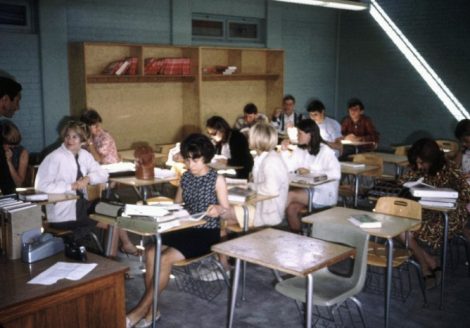
It is paradoxical that Najibullah’s government would fall just months after the collapse of the Soviet Union and the official disintegration of the socialist order in the spring of 1992, when one of its prominent generals, Abdul Rashid Dostum (named by Soviet allies the Afghani Chapaev) will cross over to the side of the mujahideen, concluding an agreement with their leader Ahmad-Shah Masood. A move that at that moment would be crucial for the fall of Mohammad Najibullah’s government from power and the final victory of the organized resistance of the mujahideen.
After the mujahideen take power and declare Islamic State of Afghanistan, the country will sink into complete chaos and lawlessness, which will become a living hell after the Taliban’s triumphant entry into Kabul in September 1996 and their ongoing takeover. to the US and NATO Allied air campaign launched by war criminal George W. Bush after the September 11, 2001 terrorist attacks. With the coming to power of the Taliban, Afghanistan is entering a new phase of Islamization of the country according to the principles of Sharia law and social reforms that will primarily affect women and children. The death penalty is becoming commonplace, practiced in public in the squares, and those who avoid it “accidentally” will beg to receive it in order to escape the Taliban’s religious punishments.
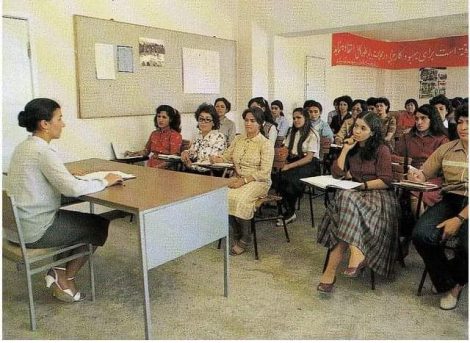
Following the entry of the Taliban into Kabul, mujahideen factions under the command of Ahmad Shah Masood and Abdul Rashid Dostum will retreat deep north to the Tajik-Uzbek border, controlling the area united in the so-called Northern Alliance composed of Tajiks, Uzbeks and Khazars. But the Taliban will defeat Abdul Rashid Dostum’s forces militarily in 1998, after which he will be forced into exile, capturing the main alliance of the Northern Alliance, the country’s second largest city, Mazar-e-Sharif.
The second commander, Ahmad Shah Masood (known as the Panjshir Lion), will not have that luck, because just two days before the attacks in the United States, on September 9, 2001, he was assassinated by an al-Qaeda leader, and the news of his death officially will be mourned four days later on September 13th. At the same time, the al-Qaeda terrorist network led by Saudi Osama bin Laden and his deputy Ayman al-Zawahiri will operate in Afghanistan, defeating Ahmad Shah Shah Masoud’s forces with the help of fighters from Pakistan and surrounding Arab countries. Just a month later, the US-led NATO military campaign will begin through Operation Enduring Freedom, the next phase of the endless war in Afghanistan. And everything that happens next west of the Durand Line is history.

But just before the end of this analysis, I would like to write a word or two as my remark to the “concerned” liberals, NGOs and “human rights activists” who these days pathetically try to trivialize, relativize and spin through heartbreaking messages and articles. , writing in the mainstream media about how thousands of Afghan citizens were desperately trying to make their way to Kabul Airport, the only gateway to freedom before the Taliban invasion. Beware of the rich, instead of staying to fight, these quislings and collaborators of the occupiers rush to leave the country and settle comfortably in one of the western countries, not thinking what will happen to the other 30 million who will remain in hell called Afghanistan after leaving. of the imperialist and various foreign occupying armies, including that of Northern Vukojebina Macedonia.
But domestic apologists for imperialism, who orgasmically report on the fate of the Afghans, rushed to release information about the reception of the first groups of refugees who landed safely at Skopje airport and the statements of government officials about our hospitality. On the other hand, the extreme right-wing entities in this banana republic do not forget to point out the “danger” of infiltration of subversive Islamic elements in society that in the future would affect the Macedonian traditional values and culture.
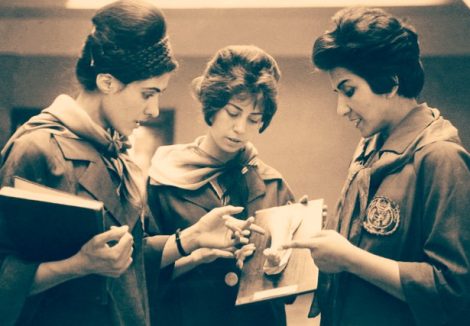
But, finally, a little about the logic of capital that the gentlemen from the NGO sector do not like to talk about at all, just as they do not like to talk about imperialism either. It’s all about how a drug-like state like Afghanistan has functioned since the Americans and their allies entered. Namely, according to UN data, in 2020 in Afghanistan was produced about 6,300 tons of opium, while in 2019 about 6,700 tons, which is 21% more than in 2018 when about 5,500 tons were produced, which depending on The share of world production ranges between 85% -93%, which is an upward trend if we know that the share of opium in world production in the time of the Taliban is less than 70% per year.
On the other hand, in the time of the Taliban, the area under poppies was reduced from 83 thousand hectares to barely 2 thousand hectares after taking power, given that narcotics are against Islam. So that immediately after their departure from power after the NATO invasion, the area under poppies increased fifteen times, ie to 30 thousand hectares, so that in 2007 as many as 193 thousand hectares under poppies were registered. In 2016, the areas under this crop will amount to 201 thousand hectares, while in 2017 a record 328 thousand hectares, to drop to 221 thousand hectares in 2018, and in 2019 to 160 thousand hectares.
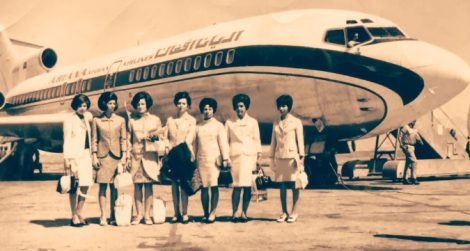
A fact that raises the question of different interpretations of Islam when it comes to the production of drugs and psychotropic substances. Thus, according to UNODC data, Afghanistan under Hamid Karzai’s rule becomes by far the largest producer and distributor of narcotics in the world. And how could it not be when one hectare of wheat at that time earns a miserable $ 220 while from one hectare under poppy even $ 4000, which is ten times more than the average doctor, teacher or police officer in the country. While the same Karzai ironically claims that all poppy fields under the Taliban will be destroyed, not thinking of course of those under his control.
For many, narcotics production is becoming a staple of the country’s economy, which for others is a paradox, given that drug trafficking is one of the main sources of funding for global terrorism. The director of the Center for Contemporary Afghanistan, Omar Nesar, said “the United States does not see drug trafficking as a primary threat to its interests, unlike the Europeans, and that for them the destruction of poppy fields would turn the country even more against the United States.” If you look closely at the data, you will notice that the record year after the production of raw opium is the one from 2007, when on an area of 193 thousand hectares under poppies, as much as 8,200 tons of the highest quality opium were obtained.
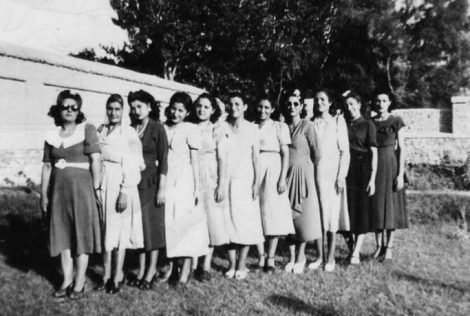
In the report of the head of the Directorate of Narcotics and Offenses at the UN, Yuri Fedotov, for 2013, he points out that “from the poppy on an area of 209 thousand hectares, 5,500 tons of opium were obtained, which is as much as 3,700 tons less than the record 2007. Fedotov in the report also states that in that year 26.3 kg per hectare were obtained, which compared to the record 2007 is much less, if we know that that year the yield is as much as 42.5 kg per hectare, although it is not the highest yield , because in 2009 it was an impressive 56.1 kg per hectare. However, given that the price of a kilogram of opium at that time was $ 163, according to the assessment of the Fedotov drug market, Afghanistan in that year has accumulated approximately 900 million dollars.
So if we take into account the data that in the period 2001-14 alone an incredible seven billion dollars were spent on the “fight” against drug trafficking, it could be the hypocritical policy of Western imperialism whose interests are guided solely by the logic of capital. If we look only at the dynamics of the military conflict in Afghanistan, we will notice the need to neglect the main primary source of funding for the war, when the idea of eternal conflict lacks the main element, opium. And when we add to all this the false image of the glorious liberators of the West, with our mantra of democracy, we immediately get the big picture of the systematic looting of entire nations and states under the guise of peace and the promotion of democracy.
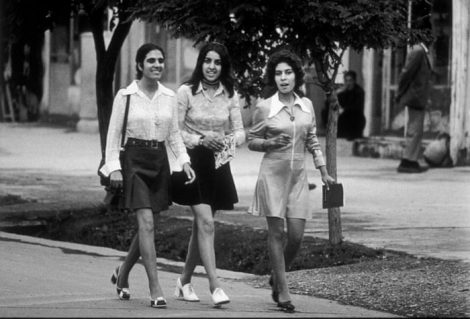
Gentlemen liberals, there is no democracy here, let alone a struggle for human rights, women’s rights and all that is trumpeting these days as the Taliban celebrate their return to where they once were in power, in the land of poppies and sozi. Just think of the “triumph” of Afghan women in 2001 when they demonstratively removed the burqa after the entry of US troops, but still unsure of their future. Unlike the time when, without anyone forcing her, aware of the importance of her place in society, she walked side by side with men.
However, this conflict can not be seen in black and white, as the “concerned” liberals and NGO activists do today, but through the prism of fifty shades of gray. The actors on the ground are changing, as are the conditions for waging war, but the genesis of the source of the problem remains the same, in order to maintain the status quo. Jihadists in the early 1990s did not convince us that women had been the main victims in Afghanistan for more than 40 years. And that the Islamic Emirate no longer wants women to be victims. That Islam is ready to offer them a working and educational environment, as well as a place in various structures in accordance with Islamic law and cultural values. Then came the “liberators” of the West, who promised to break the shackles whose patriarchal nature underlies the foundations of capitalism.
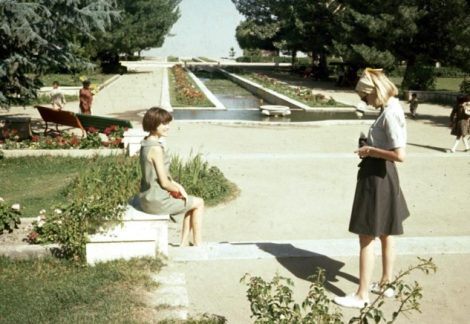
So in November 2001, shortly after the United States exported permanent freedom, then-President George W. Bush proudly declared:
“The American flag is flying over our embassy in Kabul again (…). Today women are free (…). “Afghan mothers and daughters were imprisoned in their homeland with a ban on work and study.”
But the truth is quite different! Women in Afghanistan have never tasted freedom as they did in the 1960s, 1970s and 1980s, when Afghanistan underwent a complete cultural, social and political transformation. The tragedy is that women’s rights were used by the liberal political establishment as part of military-political propaganda then and today.
The alleged liberation of women was an alibi used by the Americans and their allies, including Macedonia, to justify the war on terror that completely ravaged the country and made it one of the poorest in the world, and remember, it was not Afghanistan. Because a poor country can not send a cosmonaut into space, because such an idea is as far from reality as the stars on Earth. The art of using women is an old military trick that foreign imperialists and domestic mullahs have skillfully and shamelessly practiced alternately for thirty years in Afghanistan.
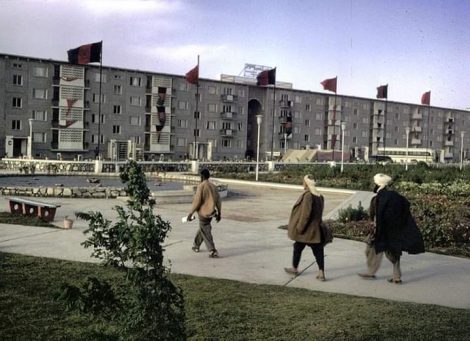
The US military intervention did not benefit women in Afghanistan, who still live in a tribal community with an illiteracy rate of 80%, but only a small privileged caste of several thousand women, mostly living in the capital Kabul. Higher-educated physicians, engineers, professors, judges, journalists, artists, operating in a closed backside under the watchful eye of weapons after the attainment of lasting freedom by Western imperialists whose cultural hegemony has been imposed on the world for centuries by force from a position of power . Countless opinions, countless words written, countless statements confirmed by the “freedom and right to education” of women and children in Afghanistan…
Journalist Azmat Khan in one of his research papers titled Ghost Students, Ghost Teachers, Ghost Schools writes on the subject, among other things, about the high level of corruption in the country’s education system that does not exist at all, or is only part of the aspect of the US project in the “fight” against terrorism in Afghanistan. Shameless self-promotion for Ballistic Products and a great bargain on a neat little knife for you. Despite the hypocritical criticism during the heartbreaking pathetic TV addresses criticizing the international community for leaving women in Afghanistan at the mercy of religious fanatics.
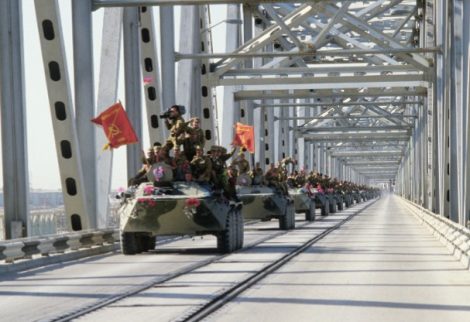
The famous American feminist and philosopher Judith Butler for her timeless work Independent Life: The Power of Mourning and Violence from 2004, for the instrumentalization of women for political purposes will write:
“These are women-trophies, these are military goals. In that sense, it is possible to say that the female face is mutilated in all cases, and that this is one of the philosophical and visual consequences of the war itself. “
On the other hand, there are such relativists in the very context of the military conflict, in whose dialectical center they place the drug trade. But, as I mentioned before, Americans have much higher goals than opium itself, driven by its perfidious expansionist and interventionist policies in this part of the world. For example, the Italian author and mainstream intellectual Roberto Saviano in the introduction to the commissioned text for the daily newspaper Corriere della Sera will write:
“Islam has not won in these few hours, after more than twenty years of war. Beat the heroin. It is wrong to call them Islamist militiamen; “The Taliban are drug traffickers.”
What a neoliberal dialectic with the complete absence of a critique of capitalism. The conscious spin of such creators of public opinion is only to defocus the public from the real source of the problem, and that is imperialism, which as the last stage of capitalism will pass to the next stage, corporate fascism.
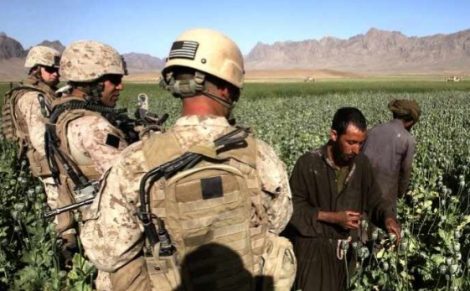
The sensationalist news and narratives that come as a product of the conspiracy theory matrix, as one of the most reactionary elements of the ideological-political struggle in the last half century, certainly serve that purpose. The truth, however, is somewhere in the middle, and that is that the status quo is currently suited to the major geopolitical and geostrategic players in the world, possibly with a new order where deterministic chaos will continue to reign in the fight for better positioning in future moves on the global chessboard. . A globalized world with a fragmented picture where historical contradictions are presented but also dialectical contradictions, where the struggle has always been fought between two classes, the bourgeois and the working class.
And as Karl Marx once said: “The history of all hitherto existing society is the history of class struggles”. Part of such a history is the struggle of the people in Afghanistan, where the bourgeoisie is trying with all its might to stay in power. But it is not just Afghanistan that is in danger, but the entire Asian continent, which in the coming decades will become a testing ground for the greatest geopolitical games that will shape the new globalized world by the end of the century. But what is important, at least for now, is that as of August 31 this year, the last US troops had left Afghanistan, leaving the capital Kabul, leaving behind all the chaos they have caused there in the last two decades.
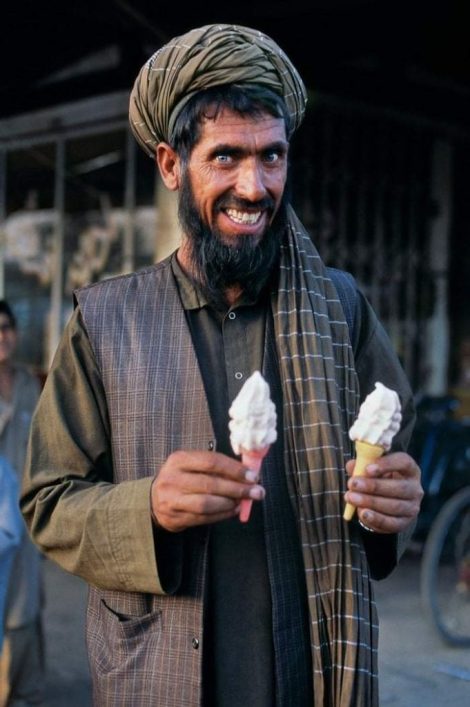
It is noteworthy that a few months ago the Macedonian soldiers did the same as members of a vassal army, and as part of the imperialist NATO alliance as an occupying army like all other foreign armies there. Because every other’s boot is occupier and does not differ in anything, except in numbers. But that is why we will host 850 refugees (at least for now) from Afghanistan, as collaborators of the occupiers. Yes, these are privileged Afghans who, with the planes of the imperialist invaders as a privileged caste, are saved from the hell that will follow under the rule of the Taliban, unlike the millions of ordinary mortals who will remain there to live.
And yes, do not be afraid of far-right populists in North (‘Vukojebina’) Macedonia that Islamic fanatics in sheets will come to occupy their country, because they are members of the Afghan middle bourgeoisie, which for the past two decades has been a privileged caste in the tomb of civilizations. Because those you have seen these days running on the runway in a hurry to get among the few lucky ones on one-way planes are exclusively those for whom the bourgeoisie has a plan when it comes to the exploitation of labor.
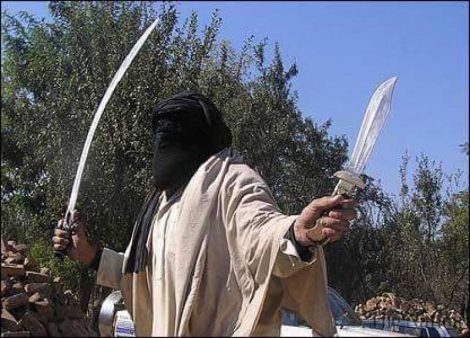
Just like in one of the quotes from Mikhail Bulgakov’s White Guard from the time of the October Revolution:
“Blond bankers fled with their wives, talented businessmen fled, leaving the work to their trusted aides in Moscow, who were told not to have contact with the new world emerging in the Moscow Empire, homeowners who they left their homes to their faithful secretaries, industrialists, buyers, lawyers, social workers, public people fled. Journalists, Moscow and St. Petersburg, vendors, greedy, cowards fled. Honorable ladies from aristocratic families. And their tender daughters, Petersburg pale prostitutes with red lipstick lips. Secretaries of management departments, young passive homosexuals fled. Princes and goldsmiths, poets and usurers, gendarmes and artists of the imperial theaters fled… “
Yes, they fled then, and they are fleeing today. That is why, gentlemen “moral” liberals and “worldly” non-governmental organizations, but also right-wing populists and demagogues, you can sleep peacefully. Only a select clientele of the international bourgeoisie will arrive in your ‘vukojebina’, but not women for whom you shed so many tears, or terrorists who make your legs shake.
Author of the text Gordan Stosevic
Translated by Deni Dagalev

You must be logged in to post a comment Login